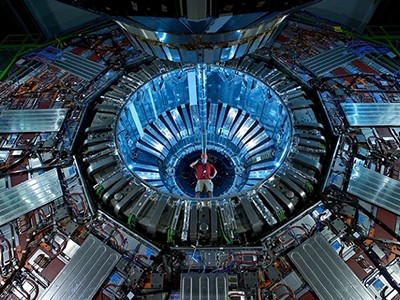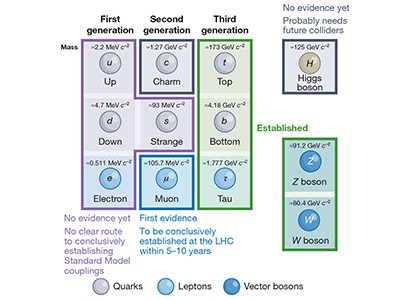SARMs, or selective androgen receptor modulators, are musculoskeletal health medications. SARM stands for selective androgen receptor modulators, a novel class of androgen receptor ligands.
With the help of SARMs, which are effective androgenic medications, it is possible to gain muscle swiftly and safely without the harmful effects of typical anabolic steroids.
Every gym rat dreams of one day achieving the objective of putting on significant muscle mass through persistent gym workouts. If you’re a dedicated bodybuilder, you should look into the best SARMs for bulking and reducing.
This page aims to define SARMs and offer further information about them. Furthermore, the most effective SARMs today that will dramatically change your workout regimen will be addressed.
Furthermore, we will prescribe a top-tier SARMs stack to enhance the results of your bodybuilding efforts regarding lean muscle mass increase.
Related: Maximizing Your Gains: How BCAA 2:1:1 Optimizes Muscle Recovery and Growth
What are SARMs?
SARMs, or selective androgen receptor modulators, are musculoskeletal health medications. SARM stands for selective androgen receptor modulators, a novel class of androgen receptor ligands.
Although SARMs and anabolic steroids have some similarities, they are fundamentally distinct. SARMs are an alternative to anabolic steroids since they selectively target androgen receptors. This increases their efficiency and makes them safer to use.
SARMs are still classed as research chemicals, although they are widely regarded as a safer, more effective, and undeniably better alternative to steroids. SARMs have grown in popularity in recent years, notably among bodybuilders and performance-oriented athletes.
In the fitness sector, SARMs are well-known as medications that can improve performance in physical activities such as bodybuilding and other sports.
Although there is still much to learn about SARMs, it is widely agreed that they are a valuable addition to any fitness regimen.
Where to buy SARMs Online?
As previously stated, SARMs are not legal drugs and cannot be lawfully obtained over the counter or online. Despite its potential advantages, SARM-based drugs have not been approved for use in humans by the FDA.
As a result, SARMs are not subject to the same severe regulation as other drugs and chemicals. If you want to buy SARMs online, ensure the product is of excellent quality and purity. Many online SARM businesses are unscrupulous and provide low-quality products. We cannot emphasize enough how strongly we advise against purchasing SARMs because they are unlawful.
However, reputable SARM supplement manufacturers continue to offer their goods online. SARM safe and legal alternatives can be acquired online or at health food stores. Legal SARM alternatives are manufactured from natural ingredients and have the same muscle-building and fat-loss benefits as SARMs. This means you may reap the benefits of SARMs without fear of legal or health ramifications.
Best SARMs
The following are some of the greatest SARMs for achieving your fitness objectives.
RAD 140 Testolone SARM
RAD 140 is currently one of the most potent SARMs available. This molecule, also known as testosterone, works just as effectively as the anabolic steroid. Numerous scientific studies back up RAD 140 as a top alternative for growing muscle mass. You can lose 10-15 pounds of fat and acquire 25 pounds of lean muscle with just one cycle of RAD 140 Testosterone.
Radius Health Inc. developed the RAD 140 Testolone SARM to treat cancer patients with severe muscle wasting disorders. However, it sprang to prominence as a powerful muscle-building supplement.
With the aid of RAD 140, you may change from being overweight to physically fit in as little as 8-12 weeks. If your fitness goals involve growing muscle development while lowering fat deposits, a RAD 140 cycle is a perfect alternative.
Benefits
- It aids in the quick development of muscular mass.
- It helps to improve general metabolic functioning.
- It helps to improve athletic endurance and performance.
- It aids in the strengthening of muscles and bones.
- It is essential for adequately burning body fat.
- It is a very safe and effective SARM with fewer chances of adverse effects when compared to anabolic steroids.
MK 677 Ibutamoren SARM
Because it causes significant increases in human growth hormone, the SARM MK-677 ibutamoren has rapidly become the buzz of the bodybuilding world. Physical development must maintain a healthy amount of testosterone and growth hormone. MK 677 is an effective SARM that boosts the generation of human growth hormone.
Clinical investigations show that MK 677 Ibutamoren is a potent growth hormone and IGF-1 promoter that, in theory, can boost ghrelin activity. The brain will respond by generating additional growth hormones. Ibutamoren is also an effective appetite suppressor at this time. MK 677 regulates hunger, libido, blood pressure, and the body’s sleep and wakefulness patterns, among many other critical processes.
MK 677 has been found in clinical trials to successfully reduce stress hormone cortisol levels and boost the synthesis of good hormones.
Benefits
- Because of the higher amounts of growth hormone, it primarily aids in reducing body fat. This HGH boost can help you burn fat faster in the long run.
- MK 677 increases muscle growth while decreasing fat without modifying one’s diet or training routine.
- It reduces the accumulation of cortisol in the body, the hormone responsible for inflammation, high blood sugar levels, and weight gain.
- The usage of MK677 aids in the improvement of muscle mass and bone density.
- It is a growth hormone mimic, particularly for men in their 30s and 40s. MK677 cures aging symptoms such as weak bones, fat accumulation, muscle mass loss, and lower energy levels.
- MK677 not only promotes a more youthful look, but it also promotes increased energy, intellect, and libido, as well as stronger bones.
- Sleep deprivation interferes with the immune system and many other standard physiological systems. MK677, on the other hand, improves the sleep cycle to boost brain functioning with an increase in growth hormone.
- MK677 also aids in reducing anxiety and post-workout tension, as well as the improvement of mental attention and memory.
- MK677 Ibutamoren improves cardiovascular health by reversing damage and increasing the durability of Endothelial Progenitor Cells, crucial stem cells for blood vessel repair.
- MK677 also raises nitric oxide levels in the body, which aids in blood pressure regulation and works against auto-immune illnesses.
LGD4033 Ligandrol SARM
LGD 4033 The bodybuilding culture, like anabolic steroids, extensively uses the SARM ligndrol for its anabolic benefits. It promotes the growth of both muscle mass and muscle density. Ligand Pharmaceuticals developed LGD 4033 to treat osteoporosis and muscle atrophy. Because of its promise, athletes, and bodybuilders began taking Ligandrol to accelerate their muscle growth. Because of the adverse side effects of steroid use, LGD 4033 has largely supplanted anabolic steroids in the fitness sector.
LGD 4033 achieves its goal by creating a tight binding with androgen receptors, abundant in skeletal muscle and bone. Because of the specific binding method, the chemical will not interact with the tissues of other essential organs and cause harm, as is familiar with anabolic steroids. Ligandrol significantly aids protein synthesis, making it a popular supplement among bodybuilders looking to boost muscular size and strength.
Athletes and fitness enthusiasts value Ligandrol LGD 4033 for its powerful performance effects. The strength and health of the muscles increase over time. It promotes bone density, tissue healing, and the decrease of inflammation.
LGD 4033 is a fantastic choice for people looking to get in shape or increase their level of physical activity. Ligandrol SARM increases endurance and stamina, allowing you to work longer and harder. It induces considerable changes in body composition, notably fat loss and muscular preservation.
Benefits
- It promotes leaner, fat-free muscle development with improved size and structure.
- It aids in the development of greater power, strength, and endurance.
- It improves performance while also increasing mental health.
- It causes the chiseled muscle to shed fat.
- It significantly improves bone density and prevents muscle atrophy.
- It improves physical fitness and shortens recuperation time between sessions.
- It provides outstanding effects from your training program, including more excellent muscle sculpting.
- It is a beautiful alternative for body re-composition and total body function improvement.
MK2866 Ostarine SARM
Low testosterone levels, diminished stamina, and other health issues are typical in older men. However, many prefer MK 2866 SARM to maintain their bodies running normally. MK 2866, commonly known as Ostarine, improves the body’s conversion of fat reserves into helpful energy. MK 2866 is a popular supplement in the fitness industry since it helps consumers gain muscle while losing fat. MK 2866’s success stems from the fact that it promotes weight reduction while also increasing muscle mass.
MK 2866 is highly recommended for anyone wishing to increase their fitness without the adverse side effects of steroid use. Ostarine MK2866 is popular among health and fitness enthusiasts since it promotes considerable muscle development and enhanced stamina, strength, and energy. Unlike other SARMs, it is gender-neutral and may be taken by both men and women. MK 2866 benefits more than just bulking up; it also increases metabolism, which helps in the battle against extra fat.
MK 2866 was initially designed as a hormone replacement therapy and treatment for illnesses characterized by substantial muscle atrophy. Ostarine’s only function directly supports the body’s anabolism, making it practical for individuals suffering from muscle atrophy. Many people credit MK 2866 for helping them gain and maintain muscle. Ostarine regulates blood sugar by boosting insulin resistance, although it works best with a nutritious diet and frequent exercise. Muscle regeneration is encouraged, as is bone density. Ostarine may be utilized during a cutting or bulking phase because of its fat-burning solid and muscle-building properties. However, it is its sculpting powers that have made it famous.
Benefits
- It has anabolic properties in bone and muscle tissue.
- It boosts the body’s metabolic activity and functioning.
- It provides excellent weight reduction and fat loss results, even in the most complex body parts.
- It aids in boosting bone density while minimizing the incidence of bone-related injuries.
- It aids in the treatment of muscle-wasting illnesses such as osteoporosis.
- It reduces the likelihood of muscle atrophy and aids in blood sugar management.
- It provides a significant increase in lean muscle mass.
- It improves diabetes control by increasing insulin sensitivity.
- It aids in the retention of muscular mass.
- It promotes the optimal functioning of the body and brain.
GW501516 Cardarine SARM
Bodybuilders regularly take GW 501516, also known as Cardarine. It is commonly used as a potent fat burner SARM during cutting cycles. Due to its ability to improve physical performance, cardarine is a popular supplement among athletes and bodybuilders alike. Bodybuilders use Cardarine because of its powerful fat-burning properties even though it is not a SARM.
Ligand Pharmaceuticals and GlaxoSmithKline collaborated in the 1990s to create GW 501516, a PRAR receptor agonist. Its effect on muscle cells causes higher energy expenditure and fatty acid oxidation. Cardarine was developed so that persons suffering from hyperlipidemia (high blood fat levels) might benefit from an effective treatment. When it was discovered that the medicine successfully treated obesity, diabetes, and cardiovascular disease, its value skyrocketed.
Benefits
- Cardarine SARM promotes endurance, which is very beneficial for athletes.
- It aids in increasing gym performance.
- Cardarine’s improved endurance will encourage users to work harder for extended periods.
- It aids in fat burning and body fat reduction by boosting the body’s metabolic performance.
- Cardarine increases the growth of lean muscle mass and the intense burning of body fat.
- It greatly aids in the reduction of inflammation in the body.
- It significantly improves general physical functioning, particularly after strenuous and rigorous activities.
- It improves athletic performance by increasing stamina and strength.
- It aids in getting back into shape and having a healthier body.
Conclusion
The most potent SARMs are only meaningful if you put in the same effort. SARMs are not a panacea for a sluggish physique and are less effective than steroids in making a slow body somewhat stronger.
SARMs, on the other hand, can be beneficial, particularly for women. Ensure you are well-informed and prepared to deal with the inevitable negative consequences. Remember that working with trustworthy sellers is critical.

















